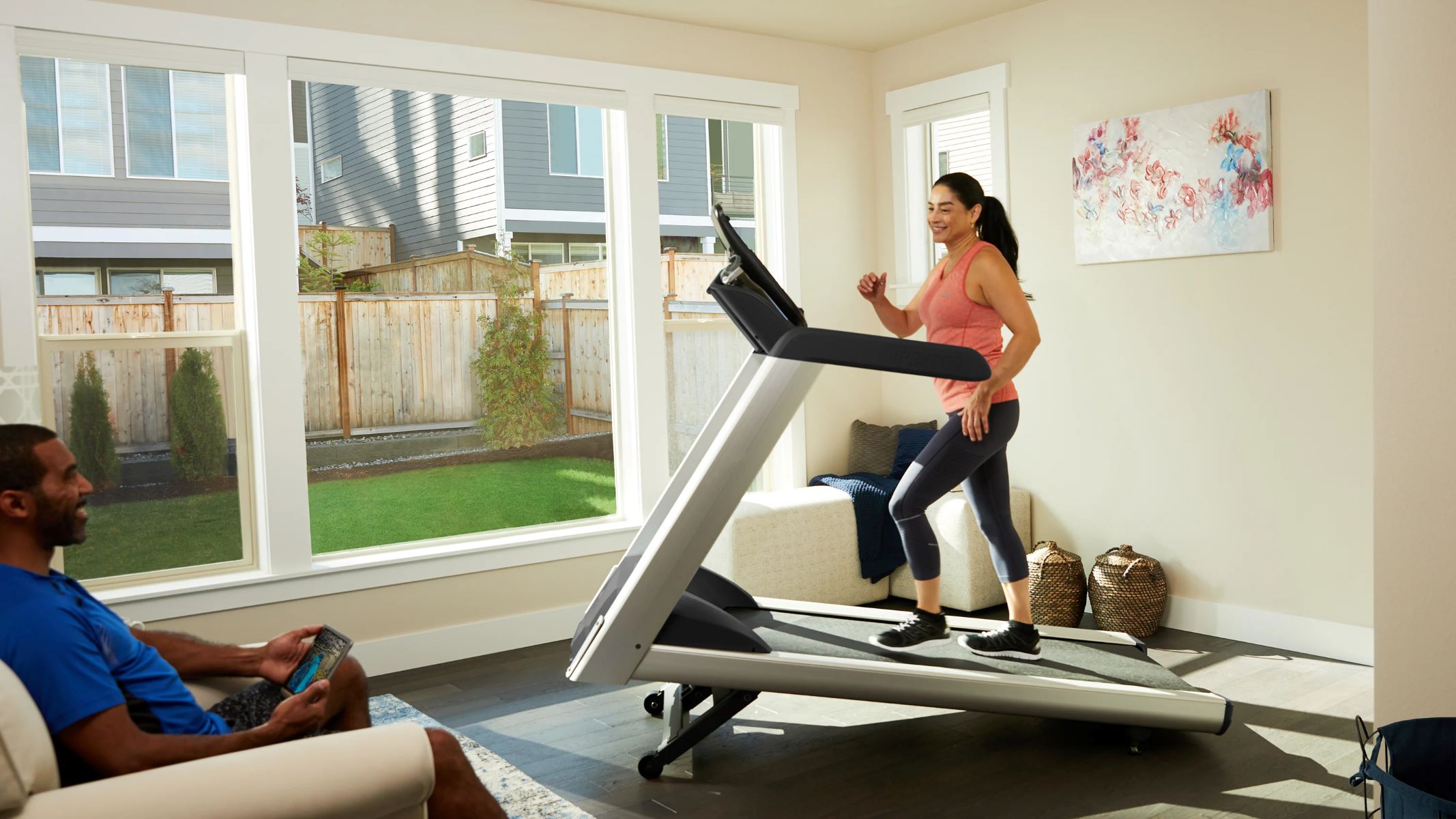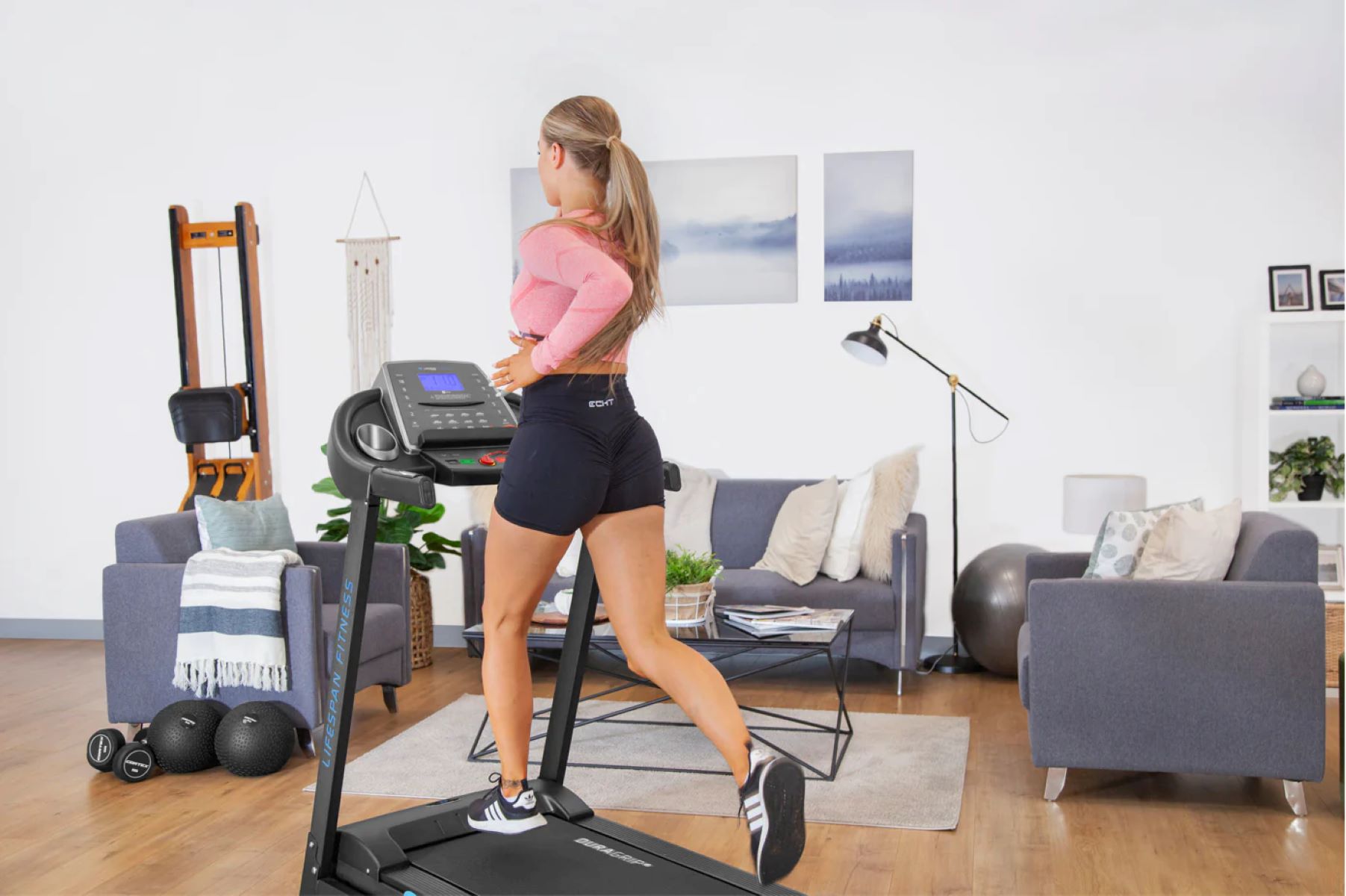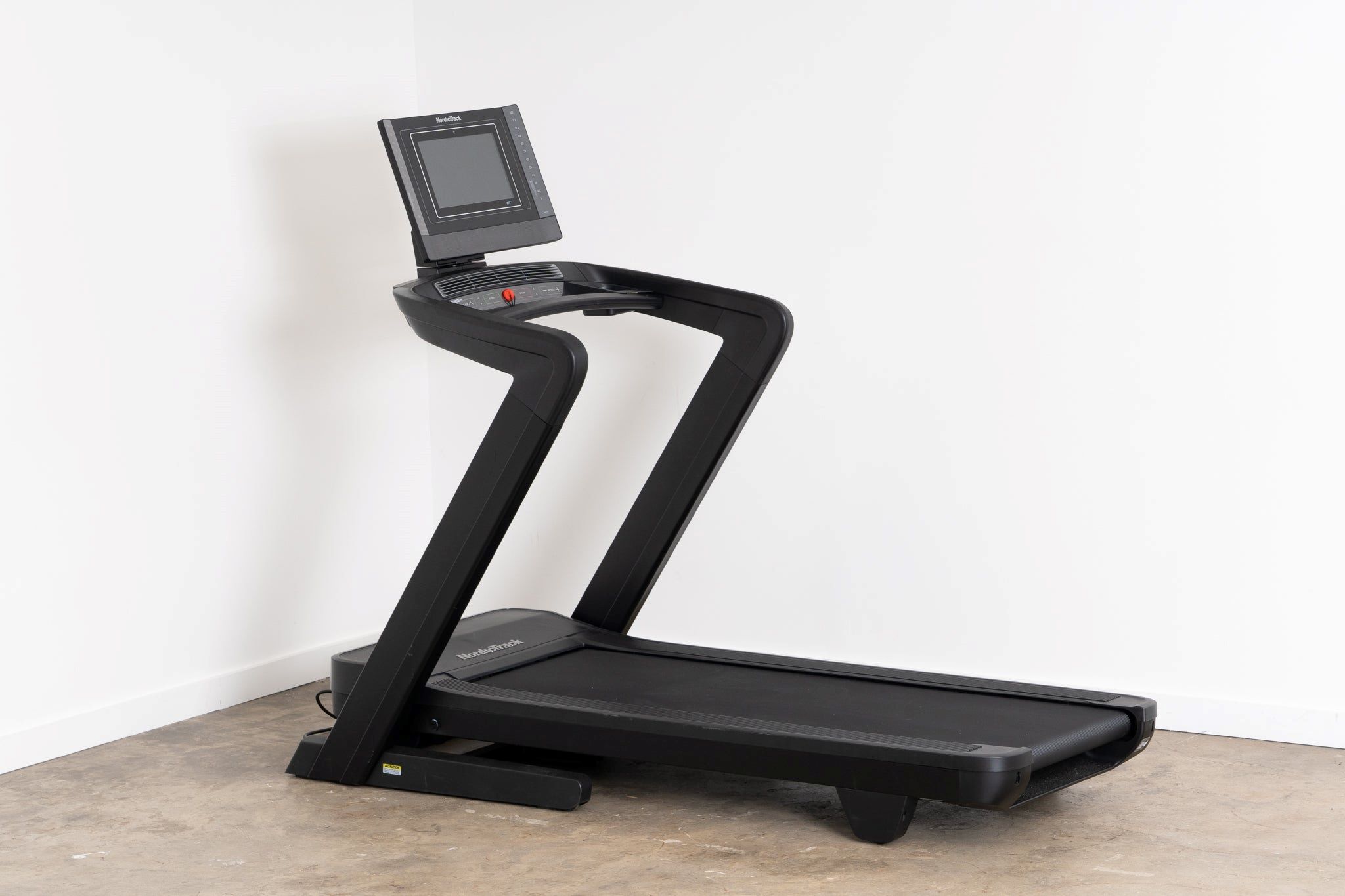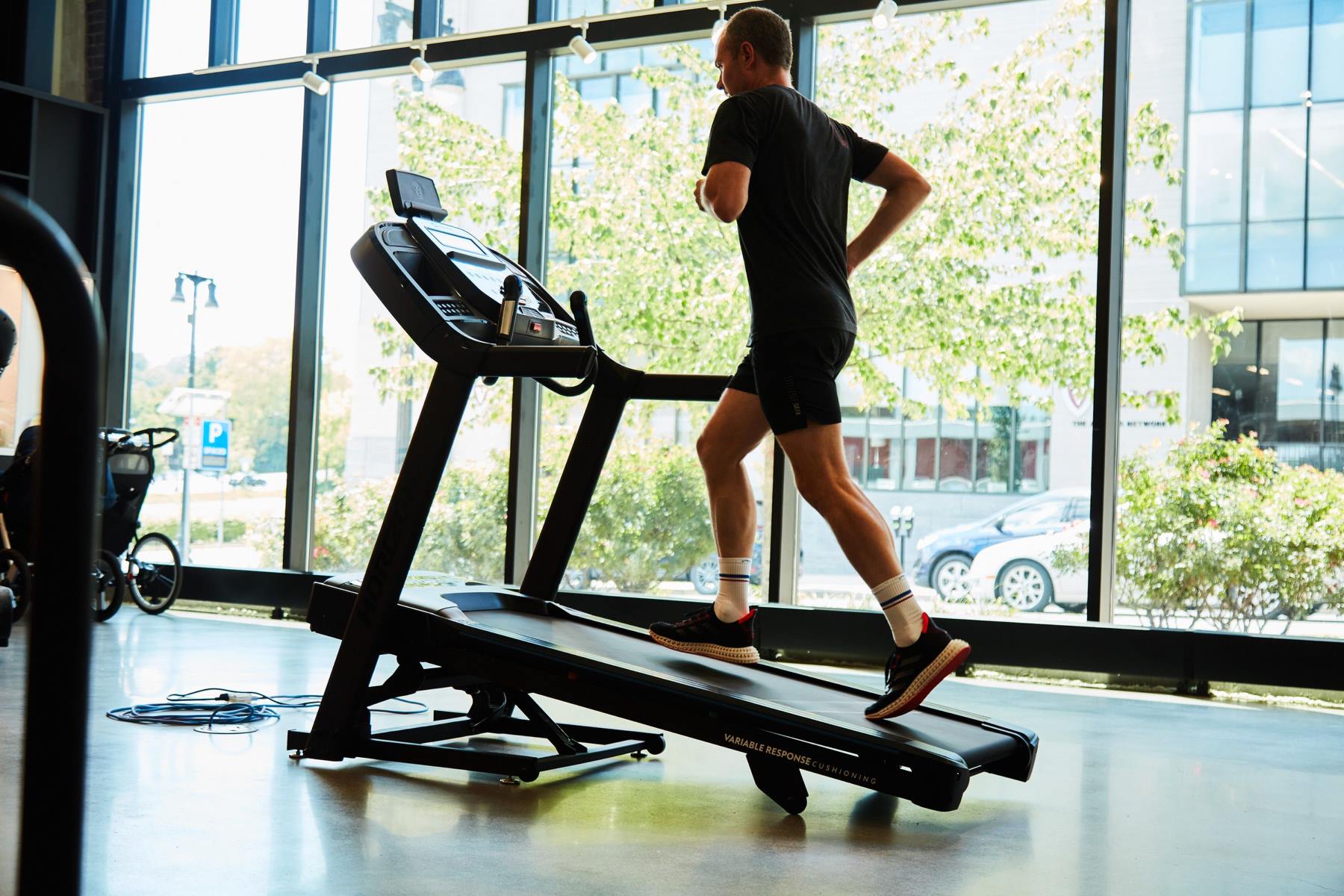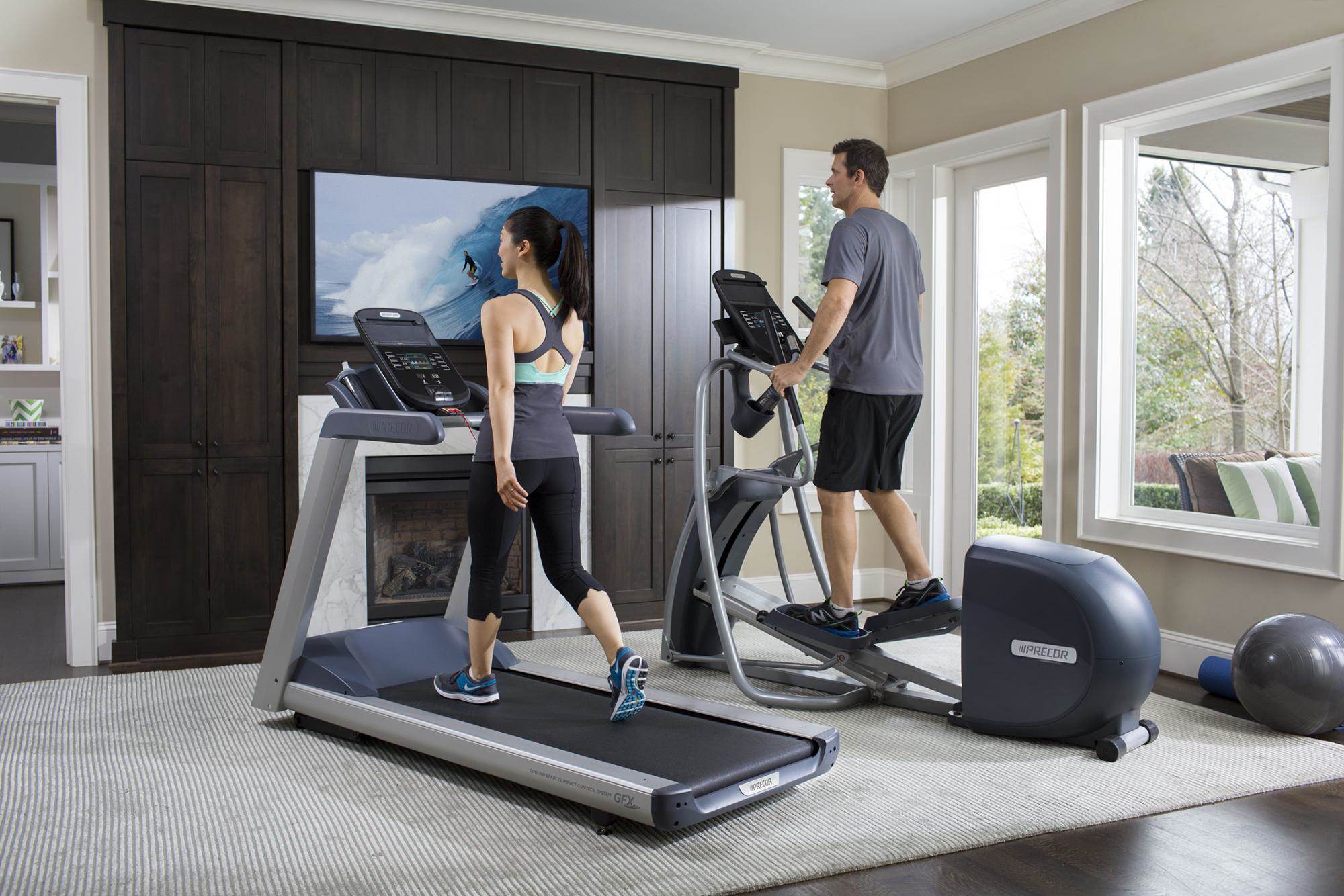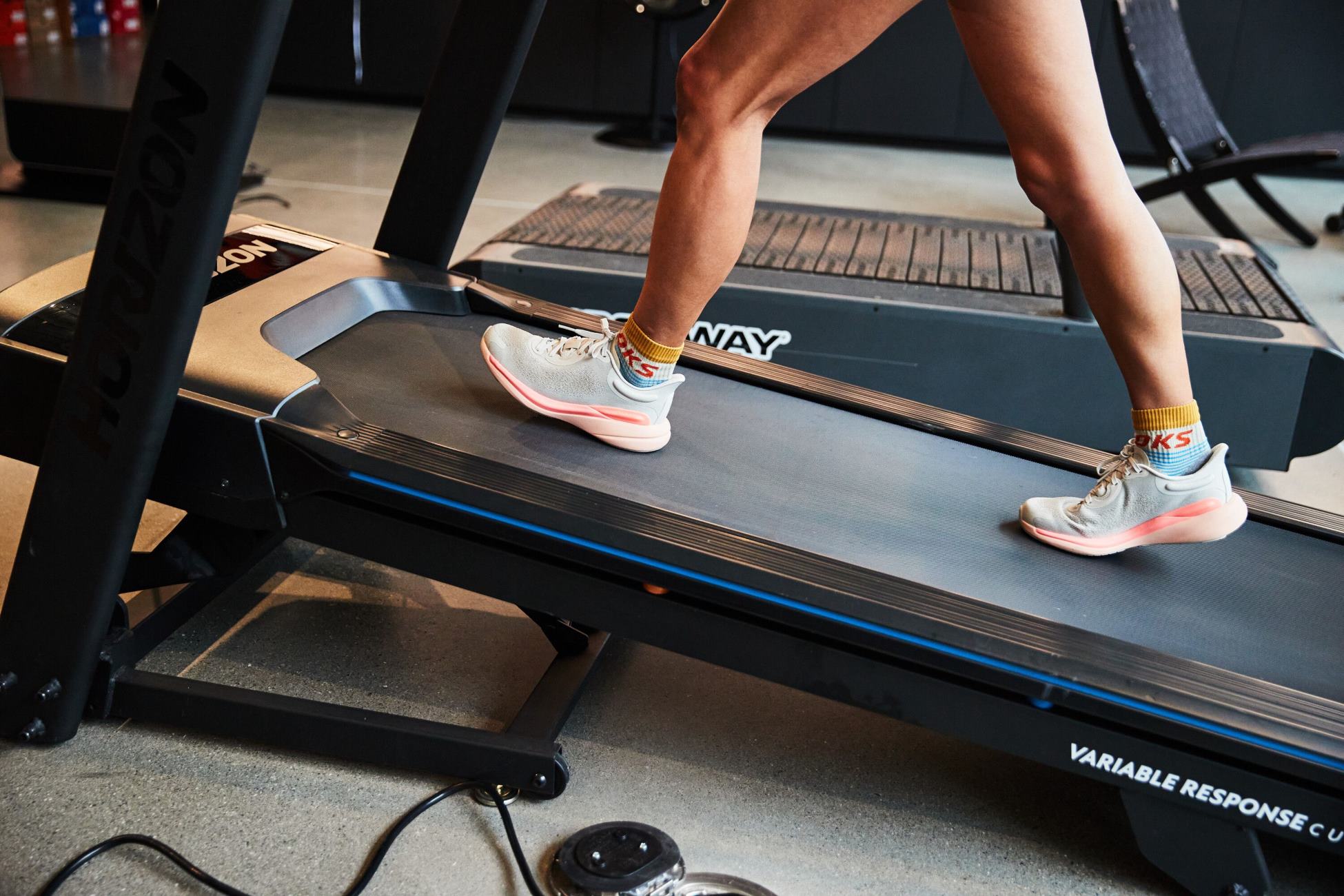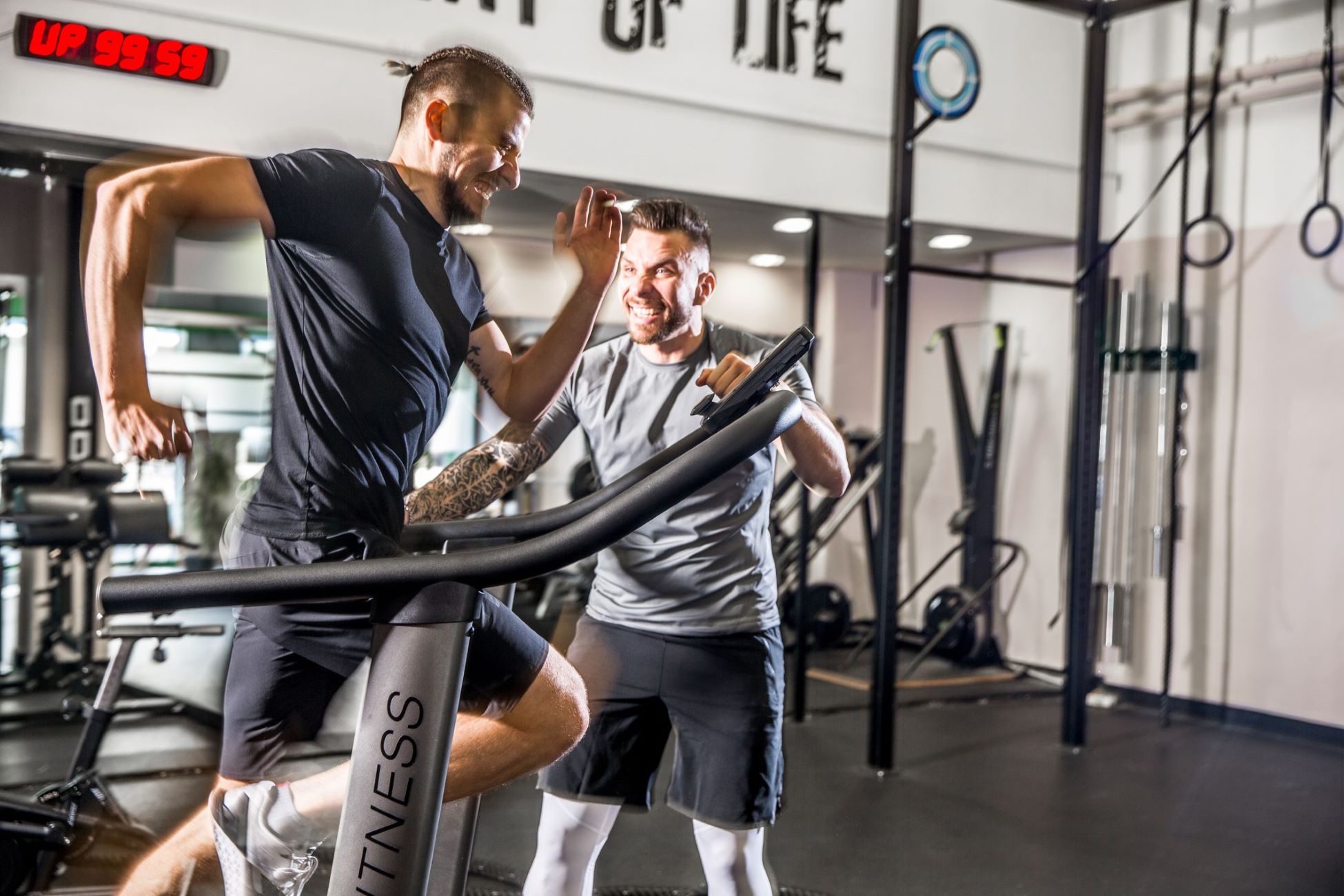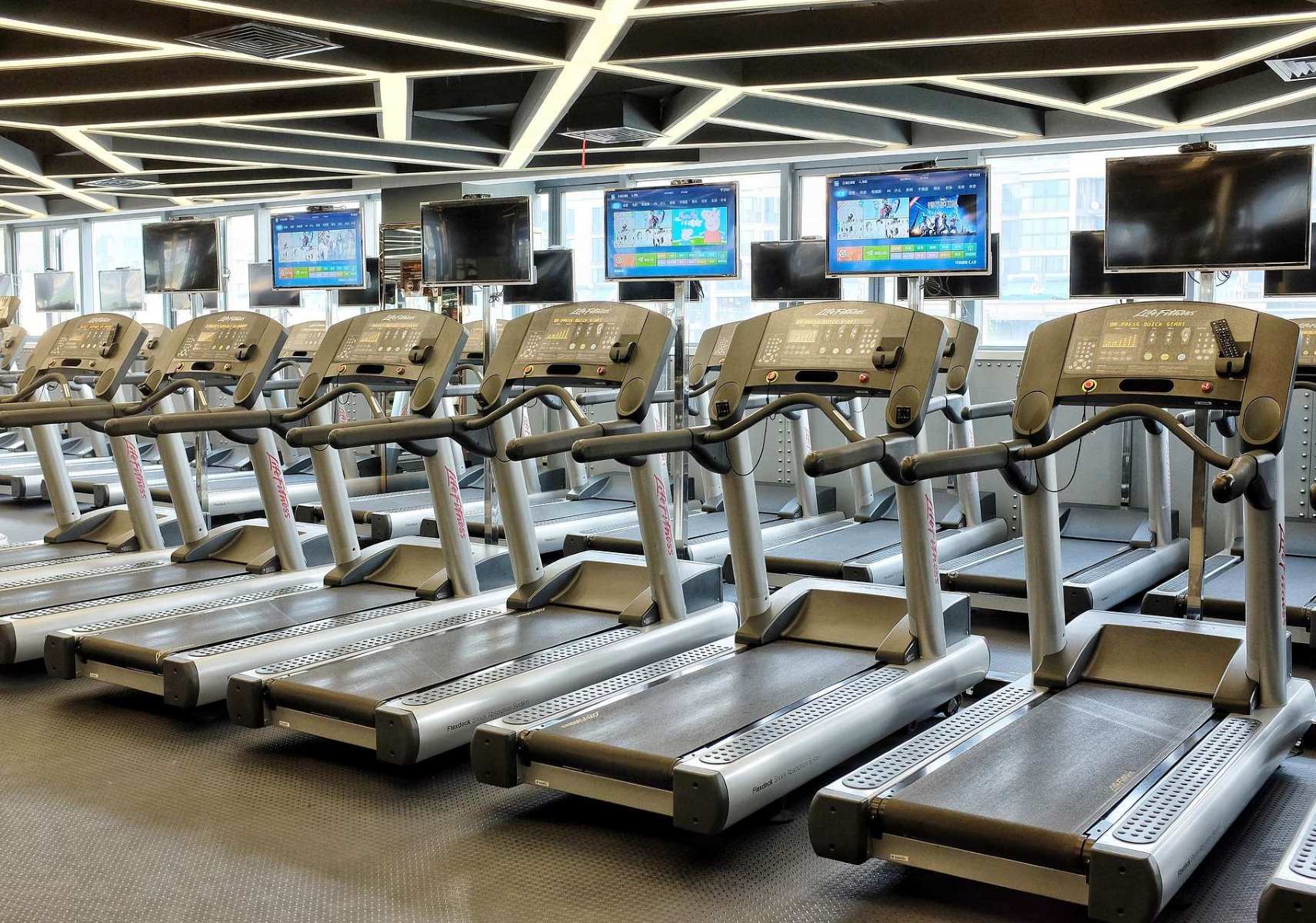Home>Misc>Featured>How Much Incline On Treadmill To Simulate Outdoor Running
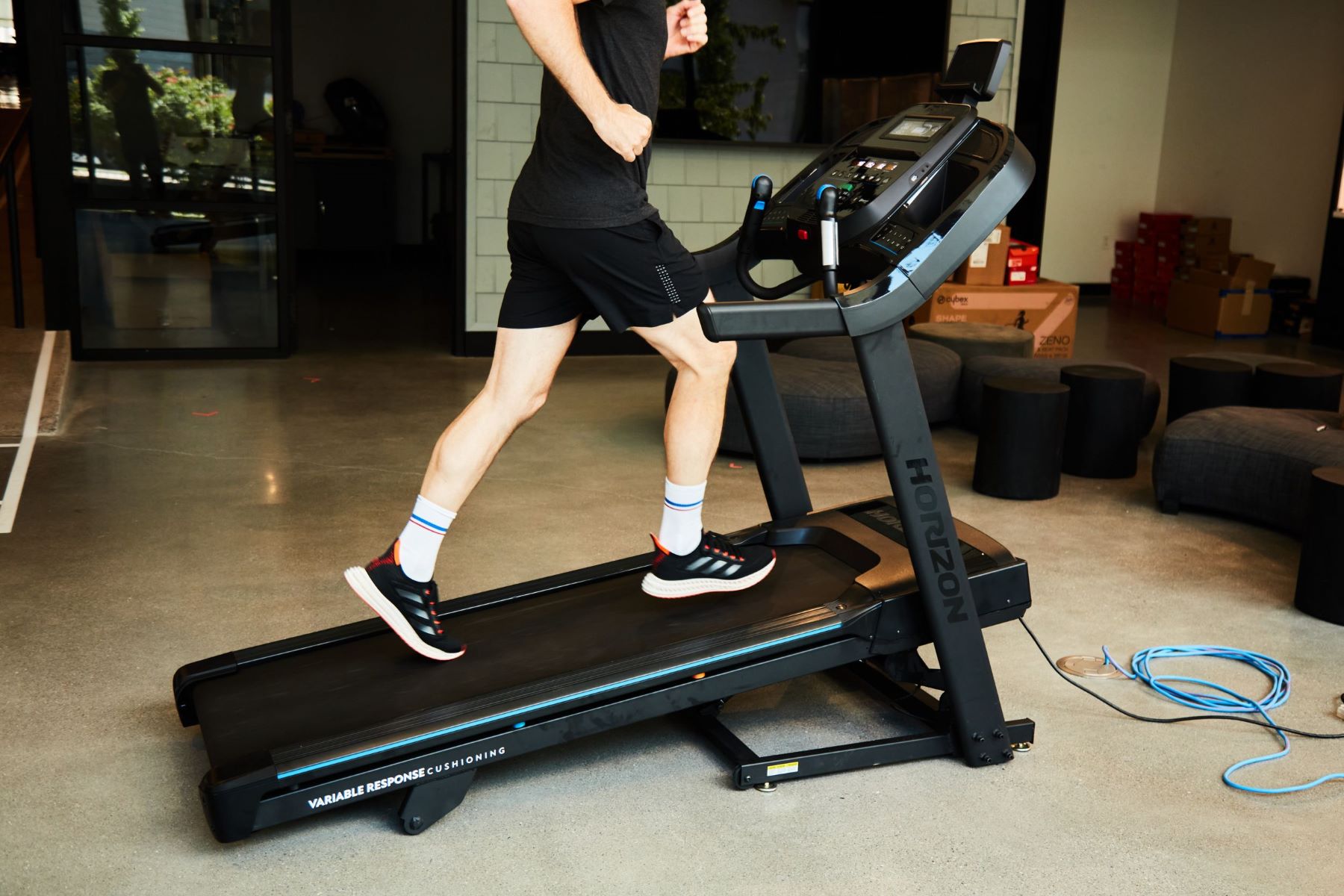

Featured
How Much Incline On Treadmill To Simulate Outdoor Running
Modified: January 2, 2024
Discover how much incline on a treadmill can help you simulate outdoor running and get featured with our expert tips and guidance.
Introduction
Welcome to the world of fitness and running! Whether you’re a seasoned outdoor runner or just starting to incorporate running into your fitness routine, it’s important to understand the different aspects of training on a treadmill. One key factor to consider is the incline level on the treadmill. But how much incline should you set to simulate outdoor running?
Running outdoors offers a variety of terrains, with hills and inclines that challenge your muscles and cardiovascular system. Incline training on a treadmill aims to recreate these inclines and provide a similar workout experience. By adjusting the incline level, you can customize your treadmill workout to match the intensity and resistance you would encounter while running outside.
Simulating outdoor running incline on a treadmill offers various benefits. It helps target specific muscle groups, enhances cardiovascular endurance, and adds variety to your training routine. However, choosing the correct incline level is crucial to reap these benefits effectively.
In this article, we will explore the benefits of incline training, understand how it relates to outdoor running, and discuss how to simulate outdoor running incline on a treadmill. We will also provide valuable tips for efficient and safe incline training. So, let’s dive in and learn more about adjusting treadmill incline levels for a successful workout!
Benefits of Incline Training on a Treadmill
Incorporating incline training into your treadmill workouts can offer a range of benefits for both seasoned runners and beginners alike. Here are some key advantages of including incline training in your fitness routine:
- Increased Calorie Burn: Running on an incline requires more effort from your muscles, resulting in a higher calorie burn compared to running on a flat surface. By inclining the treadmill, you can intensify your workout and maximize your calorie expenditure.
- Improved Leg Strength: Running uphill engages your leg muscles, including your hamstrings, quadriceps, and calves, to a greater degree. Regular incline training can help strengthen these muscles, enhancing overall leg strength and power.
- Enhanced Cardiovascular Endurance: Incline training elevates your heart rate and increases the demand on your cardiovascular system. This improves your stamina and endurance, making your heart and lungs more efficient at supplying oxygen to your muscles during physical activity.
- Simulates Outdoor Terrain: If you’re training for a race or event that involves outdoor running, incline training on a treadmill can help you replicate the outdoor terrain. This prepares your muscles and cardiovascular system for the challenges of running uphill and downhill.
- Variety and Challenge: Adding incline to your treadmill workouts brings variation to your training routine. It prevents boredom and keeps you mentally engaged. Additionally, running on an incline provides a greater challenge, pushing your limits and helping you break through performance plateaus.
It’s important to note that the specific benefits you experience will depend on the intensity, duration, and frequency of your incline training sessions. Gradually increasing the incline level over time will help you progress and continue reaping the rewards.
In summary, incline training on a treadmill offers numerous benefits, including increased calorie burn, improved leg strength, enhanced cardiovascular endurance, simulation of outdoor terrain, and added variety and challenge to your workouts. By incorporating incline training into your fitness routine, you can take your treadmill workouts to the next level and achieve your running goals more effectively.
Understanding Outdoor Running Incline
When you run outdoors, you’ll encounter various types of terrain, ranging from flat surfaces to steep hills. Understanding the concept of incline in outdoor running is essential to simulate it effectively on a treadmill. Let’s explore the different aspects of outdoor running incline:
Gradient: The gradient refers to the slope or steepness of the terrain. It is typically measured as a percentage, representing the rise in elevation over a certain distance. For example, a 5% gradient means that for every 100 meters you run, the elevation increases by 5 meters.
Uphill Running: When you encounter an incline during outdoor running, it requires more effort from your muscles to overcome the resistance of running uphill. Uphill running engages your glutes, hamstrings, quadriceps, and calves, making it an excellent workout for strengthening these muscles.
Downhill Running: Running downhill can be deceivingly challenging. Although it may seem easier than running uphill, it places different stresses on your muscles and joints. It requires control and stability to maintain proper form and avoid excessive impact on your knees and ankles.
Impact on Pace: Running uphill naturally slows down your pace due to the increased effort required. Conversely, running downhill may allow you to pick up speed more easily. Understanding the impact of inclines on your pace will help you adjust your treadmill workouts accordingly.
Training for Specific Events: If you’re training for a race or event that involves outdoor running, it’s important to consider the incline of the course. For example, if the event has significant uphill sections, incorporating incline training in your treadmill workouts will better prepare you for the race’s demands.
By understanding the aspects of outdoor running incline, you can effectively translate them to your treadmill workouts. Adjusting the incline level on the treadmill allows you to simulate the resistance and challenges of running uphill or downhill, providing a well-rounded training experience.
Now that we have a better understanding of outdoor running incline, let’s explore how to simulate it on a treadmill and make the most of our training sessions.
How to Simulate Outdoor Running Incline on a Treadmill
Simulating outdoor running incline on a treadmill involves adjusting the incline level to mimic the resistance and challenges of running uphill or downhill. Here are some steps to effectively simulate outdoor running incline on a treadmill:
- Consult the Treadmill Manual: Familiarize yourself with the features and incline capabilities of your treadmill. Read the manual to understand how to adjust the incline level and ensure you’re using the equipment correctly.
- Start with a Flat Surface: Begin your treadmill workout on a flat incline. This will allow you to warm up and establish a comfortable running pace.
- Gradually Increase the Incline: Once you’re warmed up, gradually increase the incline level. Start with a small percentage, such as 1-2%, and gradually work your way up. This will simulate the gradual slope of uphill running.
- Avoid Extremes: While challenging yourself with higher incline levels can be beneficial, avoid setting the treadmill at extremely steep angles. These extreme inclines may put excessive stress on your joints and increase the risk of injury. Find a balance that challenges you without compromising your safety.
- Alternate Incline Levels: Incorporate intervals of different incline levels into your workout. This will provide a more dynamic and varied training experience. For example, you can alternate between a moderate incline for a set duration and a higher incline for a shorter burst.
- Consider Running Techniques: To simulate different outdoor running scenarios, adjust your running technique accordingly. For example, to mimic uphill running, lean slightly forward and engage your leg muscles more. For downhill running, focus on maintaining control and balance while keeping a gentle lean forward.
- Pay Attention to Your Body: Listen to your body and adjust the intensity and duration of your incline training based on your fitness level and goals. If you experience discomfort or pain, decrease the incline or take a break. Always prioritize safety and proper form during your workouts.
By following these steps, you can effectively simulate outdoor running incline on a treadmill and tailor your workouts to your specific training needs. Remember to gradually increase the incline, vary the intensity, and pay attention to your body’s signals to ensure a safe and effective workout.
Now that we know how to simulate outdoor running incline on a treadmill, let’s explore some important factors to consider when choosing incline levels for your workouts.
Factors to Consider when Choosing Incline Levels
Choosing the right incline level for your treadmill workouts is crucial to ensure an effective and safe training session. Here are some important factors to consider when selecting incline levels:
- Fitness Level: Your current fitness level plays a significant role in determining the appropriate incline level. Beginners may start with lower inclines and gradually increase as their cardiovascular endurance and leg strength improve. Advanced runners may opt for higher inclines to further challenge themselves.
- Training Goals: Your specific training goals will also influence your choice of incline levels. If you’re training for a race with hilly terrain, it’s important to incorporate higher incline settings to simulate the race conditions. For general fitness and weight loss purposes, a mix of moderate and higher inclines can be beneficial.
- Workout Duration: The duration of your treadmill workouts should also be taken into account when selecting incline levels. Longer workouts may require lower inclines to maintain a sustainable pace, while shorter, high-intensity workouts may involve more challenging incline levels for a shorter duration.
- Recovery Time: Allow ample recovery time between intense incline training sessions. Just like any other training program, your body needs time to rest and recover to avoid overexertion and minimize the risk of injury. Consider alternating incline workouts with flat or lower incline workouts to give your muscles the time they need to recover.
- Posture and Form: Running on an incline requires proper posture and form. Ensure you maintain an upright posture, engage your core, and keep your grip relaxed on the treadmill handles. Proper form will help you optimize your workout and prevent strain on your joints.
- Personal Comfort Level: Pay attention to your personal comfort level when choosing incline levels. It’s important to challenge yourself, but not to the point of discomfort or pain. Listen to your body and adjust the incline accordingly. Gradually increase the incline over time as your body adapts and becomes more comfortable with higher angles.
By considering these factors, you can make informed decisions when choosing the incline levels for your treadmill workouts. Remember to start slowly, gradually increase the incline, and prioritize safety and proper form throughout your training sessions.
Now that we have explored the factors to consider when choosing incline levels, let’s move on to some valuable tips for efficient and safe incline training on a treadmill.
Tips for Efficient and Safe Incline Training on a Treadmill
To make the most of your incline training sessions on a treadmill, it’s important to follow some valuable tips for efficiency and safety. Here are some tips to help you optimize your incline training:
- Warm Up Properly: Before starting your incline training, spend a few minutes warming up your body. Perform dynamic stretches and light cardio to increase your heart rate and prepare your muscles for the workout ahead.
- Use Proper Footwear: Invest in a good pair of running shoes that provide proper cushioning and support. This will help absorb impact and reduce the risk of injuries, especially when training on inclines.
- Engage Your Core: To maintain proper form and balance, engage your core muscles while running on an incline. This will promote stability and help prevent any strain on your back or shoulders.
- Maintain Proper Posture: Stand tall with your shoulders relaxed and your gaze forward. Avoid leaning too far forward or backward, as it may affect your form and put unnecessary stress on your joints.
- Stay Hydrated: Hydration is essential during any workout, including incline training. Drink water before, during, and after your sessions to prevent dehydration and maintain optimal performance.
- Control Your Speed: When running on an incline, it’s important to maintain a comfortable and controlled speed. Avoid sprinting or overstriding, as it may lead to muscle fatigue or instability. Focus on maintaining a steady pace that allows you to complete your workout safely.
- Listen to Your Body: Pay attention to any discomfort or pain during your incline training. If you experience sharp or persistent pain, it’s important to stop and seek medical advice. Pushing through pain can lead to further injuries and setbacks.
- Cooldown and Stretch: After your incline training session, remember to cool down and stretch your muscles. This will help prevent muscle soreness and stiffness, promoting recovery and overall flexibility.
- Track Your Progress: Keep a record of your incline training sessions, noting the duration, incline levels, and any personal observations. Tracking your progress can help you monitor improvements and identify areas for adjustment or further challenges.
Following these tips will ensure that your incline training on a treadmill is efficient, effective, and safe. Remember to listen to your body, maintain proper form, and gradually progress in your incline levels as your fitness improves.
Now that we’ve covered these tips, let’s summarize the main points we have discussed in this article.
Conclusion
Incorporating incline training on a treadmill is a fantastic way to simulate the challenges and benefits of running outdoors. By adjusting the incline levels, you can customize your workouts to target specific muscle groups, enhance cardiovascular endurance, and replicate the experience of running on different terrains.
Throughout this article, we explored the benefits of incline training on a treadmill, the understanding of outdoor running incline, how to effectively simulate outdoor running incline, factors to consider when choosing incline levels, and valuable tips for efficient and safe incline training.
Incline training offers a range of advantages, including increased calorie burn, improved leg strength, enhanced cardiovascular endurance, simulation of outdoor terrain, and added variety and challenge to your workouts. It’s crucial to choose incline levels that align with your fitness level, goals, and training requirements. By following proper technique, listening to your body, and gradually progressing in your incline levels, you can achieve safe and effective workouts.
Remember to warm up adequately, use proper footwear, engage your core, maintain proper posture, and stay hydrated. Pay attention to your body’s signals and adjust the intensity and duration of your incline training accordingly. Cooling down and stretching after your sessions will aid in recovery and flexibility.
Incline training on a treadmill can take your running and fitness to new heights. Whether you’re training for a race, aiming to improve your strength and endurance, or simply seeking variety in your workouts, incorporating incline training is a worthy addition to your fitness routine.
Now, armed with the knowledge and tips shared in this article, go ahead and embrace the challenge of incline training on a treadmill. Enjoy the benefits it brings, push your limits, and watch yourself become a stronger, fitter, and more resilient runner!
